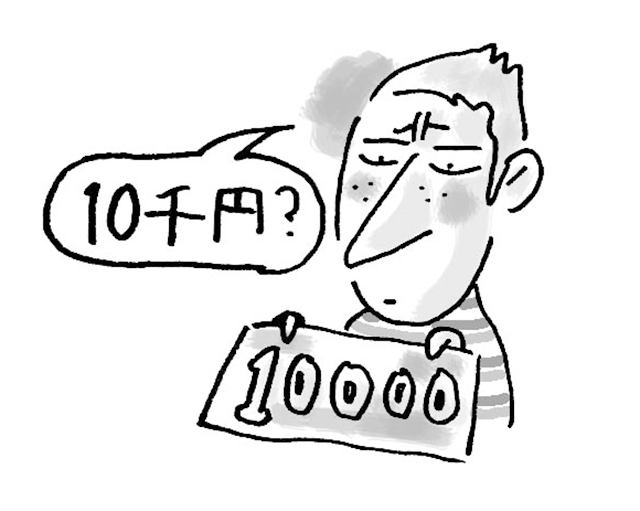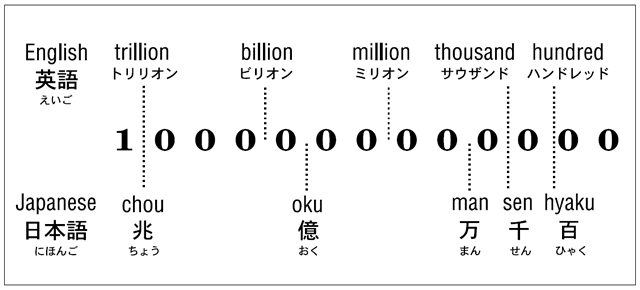Numerous Japanese Unit Names are Changed every Four Digits

When you convert US dollars to Japanese yen, you might have puzzled about the units used for Japanese numbers. In the English language, you just add the word “dollars” after a number less than 100. When a number reaches $100, it is called “one hundred dollars.” The unit name “hundred” is used. And in the same way, $1,000 is called “one thousand dollars.” The unit name “thousand” is used. This is followed by “million,” “billion,” “trillion,” etc. with the addition of every three digits.
In the Japanese language, we add “yen” after numbers less than 100. When a number reaches ¥l00, it is called “hyaku yen.” The unit name “hyaku” is used. And in the same way, ¥1,000 is called “sen yen.” The unit name “sen” is used. The method is the same as that used in English up to the unit of 1,000. However after this unit, names used in English and Japanese differ. In English $10,000 is called “10 thousand dollars,” but Japanese never say “10 sen yen,” instead, it is referred to as “1 man yen.”
In other words, in English, unit names are changed for every three digits that are added to figures over one thousand, but in Japanese, unit names change every four digits. For the figures after “man,” “oku” and “chou” are used. For example, 100 million is referred to as “1 oku yen” in Japanese. (Please refer to the below.)

In Japanese, the number ichi (1) is put at the beginning of unit names, ie: “ichi man yen” (¥10,000), ichi oku yen (¥l,0000,0000) and icchou yen (¥1,0000,0000,0000). However, ichi (1) is abbreviated for ¥100 and ¥1,000. Japanese never say “ichihyaku yen” or and “issen yen.”
